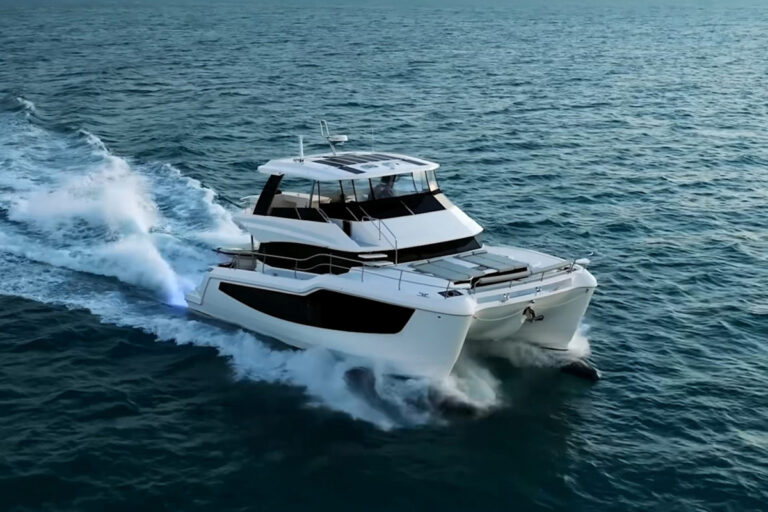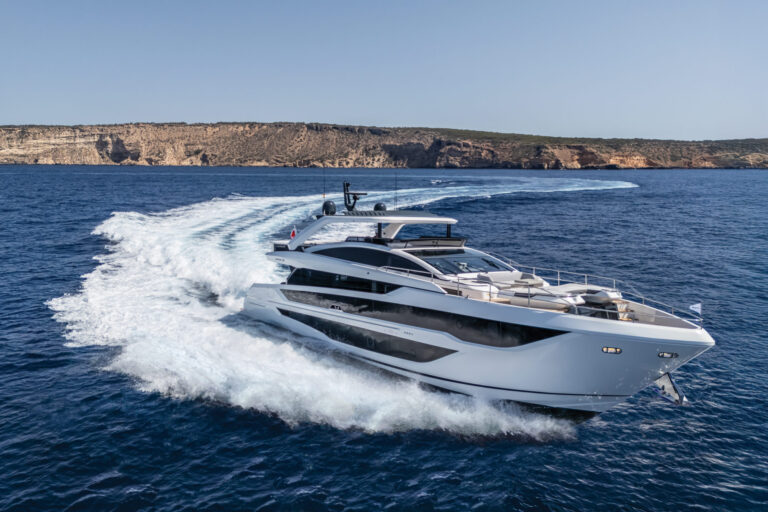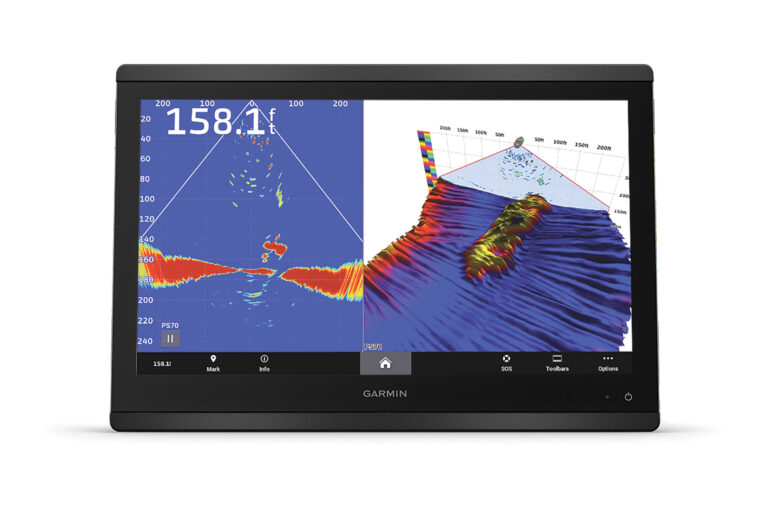Twenty-five years is a long time for a naval architect to wait for a sea trial. I may have waited longer if my old friend Bill Beardslee hadn’t invited me to join him aboard a Hatteras 58 LRC.
Bill called me a few years ago and asked about the boat. He was ready to retire, sell his Michigan boat yard and buy a cruising yacht, and the Hatteras was high on his list. Jack Hargrave had designed her in the mid-1970s, when I was his vice president. Naturally, my friend wanted an informed opinion before signing the papers.
The boat had been out of production since 1985, but Bill knew of a well-maintained late model. The 58 LRC, designed in response to the fuel shortages of that era, has a full-displacement hull form. Standard power is a pair of Detroit Diesel 4-71N engines, enough to push the boat to its hull speed of 10 knots. The boat Bill was considering had the optional Detroit 6-71N diesels and a bit of margin for keeping the speed up in head seas. After our chat, Bill made the boat his own, and he and his wife, Susan, set out on the cruise of a lifetime.
They picked up the boat in Florida and, after seeing the cannon-topped grave of Otway Burns, privateer, in the Old Burying Grounds of Beaufort, North Carolina, christened her Snapdragon after Burns’ ship. They spent their first year cruising the Great Lakes, the East Coast, Florida and the Bahamas. Last spring, they shipped Snapdragon to Vancouver and headed north to Alaska.
On their way back, Bill gave me another call and invited me to join them on their way to Vancouver.
Of course, I jumped at the chance for the exceptional cruise. What a wonderful opportunity to check out a boat whose birth I had witnessed a quarter-century ago, to see how she’s held up and to decide what I might be tempted to redesign were Snapdragon mine.
We flew into Prince Rupert in early September and boarded Snapdragon for the southbound leg to Bella Bella. Devoting nine days to a trip that takes less than an hour by plane let us appreciate every one of the thousand waterfalls at our leisure. In Grenville Channel, the cruise ship Statendam hurried by on her way to Alaska’s Glacier Bay. Her thousands of unknowing passengers had missed the majestic splendor of British Columbia’s Fiordland Park, the serenity of nature as bears fed on salmon in Khutze Inlet and the quirky graffiti that adorned the tiny tin-roof shack that passed for a spa at Bishop Bay Hot Springs.
They had also missed the tiny entrance to Bottleneck Inlet, a cove off Finlayson Channel. It could grace an Absolut ad without any photo retouching. Taking breakfast alfresco on a brisk morning as the fog lifted, we enjoyed warm, homemade cereal on the flying bridge as bald eagles passed so closely overhead we could hear the sound of their broad, powerful wings.
As unforgettable as the scenery was, I am, after all, a naval architect. As we traveled south, I noticed what was new and what was old. I found pleasing assurances that yacht design has indeed improved over the years, and I made some mental decisions about changes I’d make were I designing her today.
High on my list was larger heads. Oh, for just a few more inches! A 27-inch shower, and 3 inches from toilet to bulkhead, is not enough. Adults of average size can’t shower in a 27-inch stall without banging their elbows; 36 inches would be wonderful, but uncommon.
Speaking of heads, the ones aboard the LRC are intended for remote cruising, not tying up at a yacht club. This means anchoring and running off the inverter whenever possible to prevent the noise of a generator, and drawing heavily from the water tanks. A larger water tank would be an asset because with so much time spent on inverter power, Snapdragon’s watermaker has little time to keep up with water usage. An interesting bit of irony in modern boats is that water tanks seem to be getting smaller because most owners tie up in a slip and use shorepower for the watermaker.
Built-in stowage for fenders and lines would have been great. Snapdragon has several deck boxes, but why not have lockers? Home designers rejected freestanding wardrobes for closets decades ago. A little more inside stowage, particularly book shelves, wouldn’t hurt, either.
A previous owner, during a galley makeover, took care of one thing I’d definitely update. In place of the single rectangular sink all the way outboard, a pair of round sinks had been installed in the after corner, yielding more usable counter space and making the galley much more workable.
The starboard stateroom is a tiny space originally fitted with a high single berth for crew, but Bill and Susan, both able navigators and helmsmen, operate Snapdragon themselves. Bill is also devoted to maintaining the boat in Bristol condition (I say diligent, Susan says obsessive), so he had already commandeered the little cabin as a workshop. The berth’s mattress was gone, and the bed board served nicely as a workbench, conveniently located just outside the engineroom door.
High on Bill’s wish list was a second engineroom door at the master stateroom foyer. It would have been so easy on the drawing board, but with all the equipment installed on the bulkhead, it would be a real job now. Bill serves as his own engineer, so such a door would make nightly shutdowns and periodic checks of the engineroom easier. It would also provide a second emergency escape route for all the spaces belowdecks.
In addition to the 58 LRC, Hatteras built 42, 48 and 65 LRCs. The 65 LRC was similar to the 58 in style and arrangement, but offered more room at an accordingly higher price. Though all the LRCs are out of production, there is an active Hatteras LRC Owners’ Association. When I contacted the Owners’ Association to get another take on 58 LRCs, I was put in touch with Kirk Irwin.
After 13 years on a 42 LRC, Irwin and his wife recently moved up to a 58 LRC. She is hull number two, built in 1975 and not given the care Snapdragon enjoyed over the years. The Irwins are in the process of a major refit, and they have a longer wish list.
The after bulkhead in their saloon will be opened up and the afterdeck enclosed, creating more interior space. There will be a new galley and a soft flying bridge enclosure. They have already consolidated many of the through-hulls, changed the MSD’s from salt to fresh water and added a fuel transfer pump. The Irwins are happy with the 4-71 engines, but would like a bow thruster to improve maneuverability for docking in a blow. The structural changes are a matter of individual preferences, while the changes to the machinery and plumbing bring the boat up to modern standards.
The Irwins would also like a bigger cockpit and a bigger pilothouse, but that will have to wait for a bigger boat. Though the trip on Bill’s Hatteras proved designers have come a long way, there are no miracles.
Contact: Hatteras LRC Owners’ Association, TheGoodLifeIII@aol.com.







